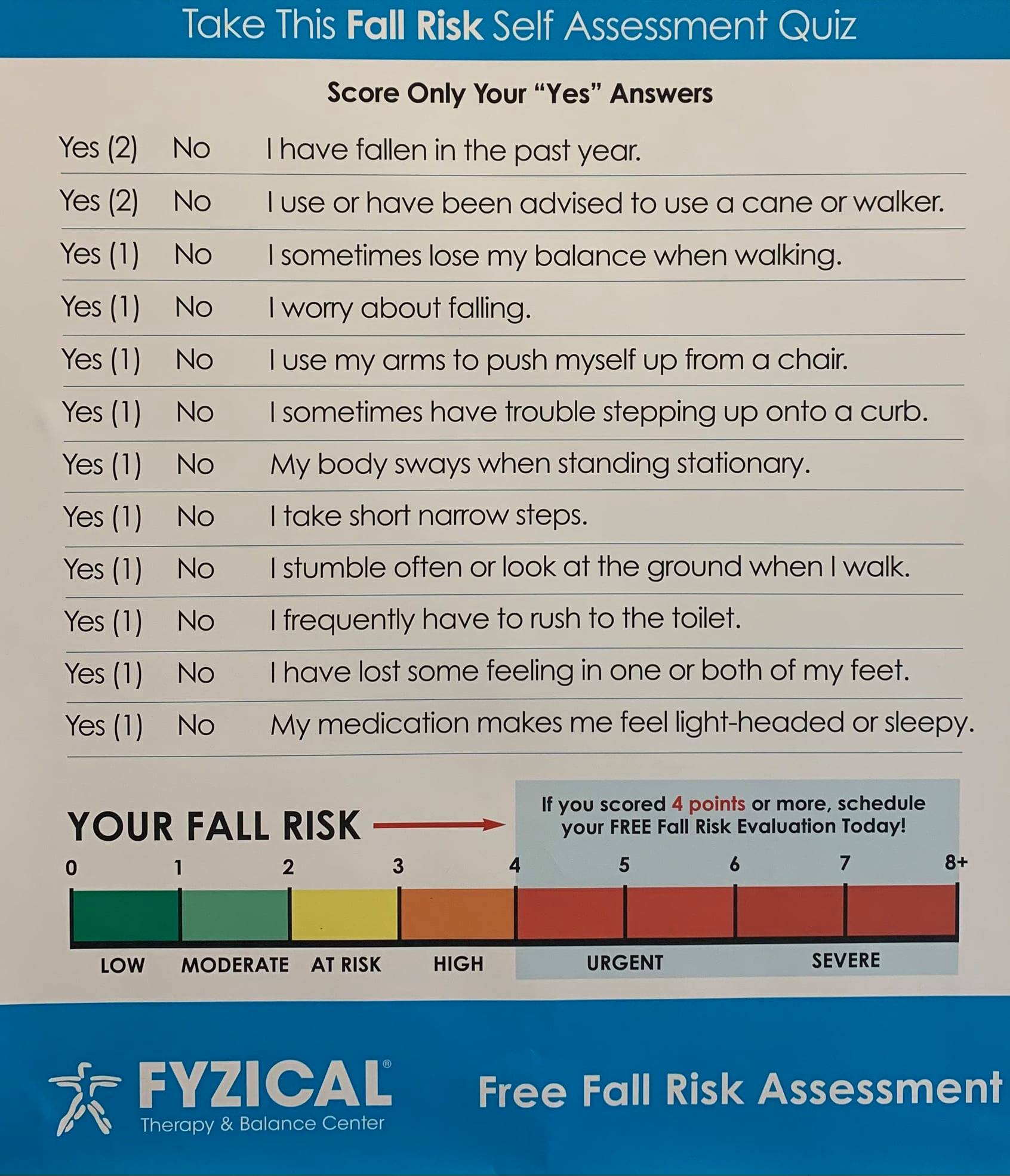3 Easy Facts About Dementia Fall Risk Shown
3 Easy Facts About Dementia Fall Risk Shown
Blog Article
The Single Strategy To Use For Dementia Fall Risk
Table of ContentsThe 10-Minute Rule for Dementia Fall RiskAll About Dementia Fall RiskA Biased View of Dementia Fall RiskHow Dementia Fall Risk can Save You Time, Stress, and Money.
A loss danger evaluation checks to see exactly how likely it is that you will certainly fall. It is primarily done for older adults. The assessment usually consists of: This consists of a series of questions regarding your overall health and if you have actually had previous drops or problems with equilibrium, standing, and/or strolling. These devices check your stamina, balance, and gait (the means you stroll).STEADI includes testing, evaluating, and intervention. Interventions are recommendations that may minimize your threat of dropping. STEADI consists of three actions: you for your danger of dropping for your threat aspects that can be boosted to attempt to prevent drops (as an example, balance troubles, damaged vision) to reduce your danger of falling by making use of reliable strategies (for instance, offering education and learning and resources), you may be asked a number of inquiries consisting of: Have you dropped in the previous year? Do you really feel unsteady when standing or strolling? Are you fretted about dropping?, your provider will certainly test your strength, equilibrium, and stride, making use of the complying with autumn evaluation tools: This test checks your stride.
If it takes you 12 seconds or more, it might imply you are at greater risk for an autumn. This examination checks stamina and equilibrium.
Relocate one foot halfway ahead, so the instep is touching the big toe of your other foot. Move one foot totally in front of the other, so the toes are touching the heel of your various other foot.
The Single Strategy To Use For Dementia Fall Risk
The majority of drops occur as a result of multiple adding elements; as a result, handling the danger of dropping starts with determining the elements that contribute to fall risk - Dementia Fall Risk. A few of the most relevant threat aspects include: Background of previous fallsChronic medical conditionsAcute illnessImpaired stride and balance, lower extremity weaknessCognitive impairmentChanges in visionCertain risky medications and polypharmacyEnvironmental factors can additionally boost the threat for drops, including: Inadequate lightingUneven or damaged flooringWet or unsafe floorsMissing or harmed handrails and get barsDamaged or incorrectly fitted tools, such as beds, mobility devices, or walkersImproper usage of assistive devicesInadequate supervision of the people staying in the NF, including those who show aggressive behaviorsA successful autumn danger monitoring program requires a detailed professional assessment, with input from all members of the interdisciplinary group

The treatment strategy must additionally include treatments that are system-based, such as those that promote a safe environment (proper lighting, handrails, order bars, etc). The performance of the interventions need to be assessed regularly, and the treatment strategy revised as needed to reflect adjustments in the fall danger evaluation. Executing a loss risk management system making use of evidence-based best method can lower the prevalence of falls in the NF, while restricting the possibility for fall-related injuries.
All About Dementia Fall Risk
The AGS/BGS find standard advises evaluating all grownups aged 65 years and older for fall risk every year. This testing is composed of asking patients whether they have fallen 2 or more times in the previous year or looked for clinical focus for a loss, or, if they have actually not dropped, whether they really feel unstable when strolling.
Individuals that have actually dropped when without injury must have their equilibrium and gait examined; those with gait or balance abnormalities ought to receive additional assessment. A history of 1 loss without injury and without stride or balance issues does not require further assessment past ongoing yearly autumn risk screening. Dementia Fall Risk. A loss threat evaluation is needed as part of the Welcome to Medicare examination

Getting My Dementia Fall Risk To Work
Documenting a drops history is just one of the high quality indications for autumn avoidance and administration. An essential part of threat assessment is a medicine testimonial. A number of courses of medications raise autumn threat (Table 2). copyright medicines particularly are independent forecasters of drops. These drugs have a tendency to be sedating, modify the sensorium, and impair equilibrium and stride.
Postural hypotension can often be alleviated by lowering the dose of blood pressurelowering medications and/or quiting medications weblink that have orthostatic hypotension as a negative effects. Use of above-the-knee assistance hose pipe and sleeping with the head of the bed raised may also lower postural reductions in blood pressure. The recommended aspects of a fall-focused health examination are revealed in Box 1.

A Pull time greater than or equivalent to 12 seconds recommends high autumn risk. Being not able to stand up from a chair of knee height without using one's arms indicates enhanced loss danger.
Report this page